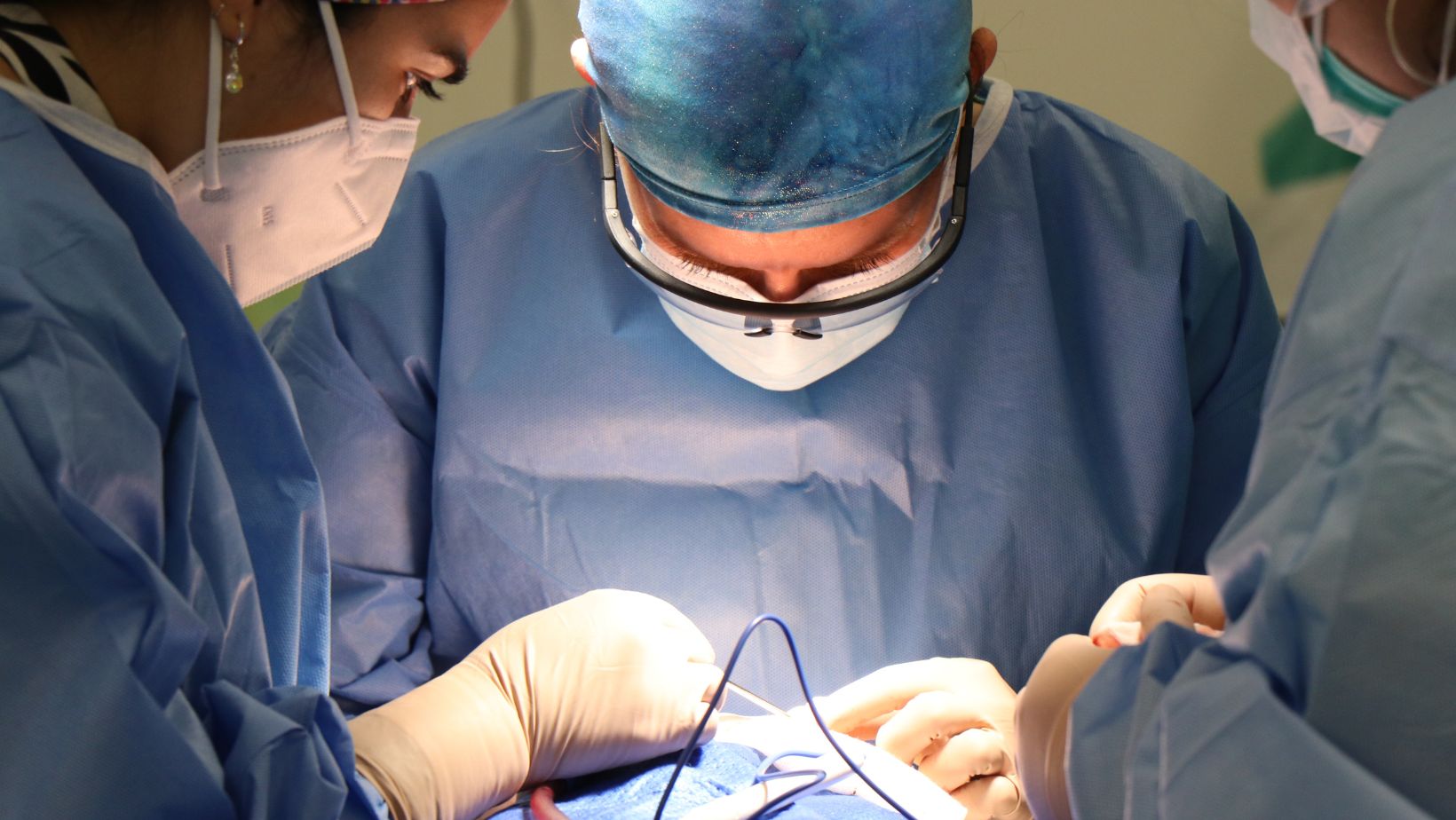General surgeons do surgeries in the abdomen, skin, breast, soft tissues and endocrine system. This includes appendectomies, hernia repairs and trauma surgeries. If you’re wondering what surgeries do general surgeons do, read on to learn about the surgeries and their importance.
What is General Surgery
General surgeons are the Swiss Army knives of the medical world, able to deal with a huge range of surgical conditions affecting almost any part of the body. Their scope includes not only surgery but also pre and postoperative patient care. The typical area of general surgery is the abdomen, breasts, peripheral blood vessels, skin and neck.
In the US, general surgeons tend to avoid more complex procedures involving neurology, orthopedics, thoracic regions, or urology, leaving those to specialists in those fields. However, their expertise in various surgical procedures also means they play a crucial role in General Surgery Medical Billing, as accurate coding and documentation are essential for insurance claims and reimbursements.
Abdominal Surgeries
Abdominal surgeries are the most common procedures general surgeons perform. A big one is the cholecystectomy, a gallbladder removal procedure, often due to gallstones causing pain or infection. This surgery prevents complications like gallbladder inflammation or pancreatitis.
Another common operation is the appendectomy, the removal of the appendix, typically performed to treat appendicitis, an inflammation that can be serious if left untreated. Hernia repair is another vital abdominal surgery, addressing the protrusion of an organ or tissue through the abdominal wall.
Inguinal hernia repairs are often done laparoscopically, so patients can recover faster and have less postoperative pain. These surgeries, whether hernias, appendicitis or gallstones, show how important general surgeons are in treating abdominal conditions.
Gastrointestinal Procedures
General surgeons also do gastrointestinal procedures, dealing with a wide range of conditions using both traditional and minimally invasive techniques. Laparoscopic surgery is preferred for gastrointestinal operations because of its benefits – less pain, minimal scarring and shorter recovery time. This has revolutionized the treatment of conditions like achalasia and gastroparesis and resulted in better patient outcomes.
For upper gastrointestinal tract including esophagus and stomach, general surgeons use surgical staplers to close wounds or join tissues. These procedures show the combination of precision and innovation general surgeons bring to gastrointestinal surgery.
Breast Surgery
Breast surgery is another area where general surgeons play a key role, especially in breast cancer treatment. Lumpectomy, also known as partial mastectomy, is the removal of a tumor with some surrounding healthy tissue, suitable for early stage breast cancer. This surgery takes about one to two hours and balances tumor removal with preserving as much breast tissue as possible.

In more advanced cases, mastectomy may be needed, involving the removal of one or both breasts and sometimes adjacent tissues depending on the extent of cancer. Timing of these surgeries is critical, better outcomes are seen with surgeries done within eight weeks of diagnosis.
The comprehensive approach of general surgeons in breast cancer treatment shows how important they are in patient care.
Endocrine Surgery
Endocrine surgery is the removal of diseased parts of glands in the endocrine system, such as thyroid, parathyroid and adrenal glands. General surgeons do thyroidectomy, the removal of the thyroid gland, for thyroid cancer and hyperthyroidism. This surgery is vital in managing hormonal imbalances and reducing cancer progression.
Adrenalectomy, the surgical removal of one or both adrenal glands, is done for tumors or Cushing’s syndrome. These surgeries are important in maintaining hormonal balance and improving a patient’s quality of life.
Soft Tissue Surgeries
Soft tissue surgeries include procedures involving the skin and subcutaneous soft tissues. A common example is the excision of lipomas, benign tumors found in subcutaneous tissues. These tumors need removal if they cause pain or grow rapidly. Techniques for removing lipomas are surgical excision and liposuction to avoid large scars.Complications from these surgeries can include infection, hematoma and nerve injury, which is why general surgeons are crucial. Management of these conditions by general surgeons helps alleviate discomfort and prevent further complications.
Trauma Surgery
Trauma surgery is a high stakes area where general surgeons treat life threatening injuries from accidents, falls and assaults. Common procedures include emergency thoracostomy, thoracotomy and laparotomy to treat severe chest and abdominal injuries. The ability to do these surgeries quickly and accurately can mean the difference between life and death.
General surgeons managing trauma cases must be able to diagnose and treat a wide range of traumatic injuries. Their expertise and quick decision making is vital in emergency situations, highlighting their role as critical care providers in the surgical field. Additionally, they often work alongside mental health professionals, as trauma patients may experience psychological distress following severe injuries, emphasizing the importance of a holistic approach to recovery.
Vascular Surgery
General surgeons also do vascular surgeries, dealing with blood vessel conditions. One common procedure is varicose vein removal which can alleviate symptoms and improve the appearance of the affected area. Clinics like the East Orlando Vein Doctor specialize in treating varicose and spider veins, offering minimally invasive solutions tailored to individual patient needs. These surgeries require precision and knowledge of vascular anatomy for successful outcomes.
Laparoscopic and Minimally Invasive Procedures
The rise of laparoscopic and minimally invasive procedures has transformed general surgery, offering many benefits over open surgery. Laparoscopic surgery involves small incisions, usually less than half an inch, through which a laparoscope with a camera is inserted and real time images projected onto a monitor. This allows surgeons to see the surgical area more clearly and do surgery more precisely.
Advanced procedures like LINX device implantation for severe GERD and laparoscopic common bile duct exploration show the versatility of these techniques. The advent of robotic-assisted surgeries like da Vinci Surgical System has further enhanced minimally invasive surgery, with better patient outcomes, less complications and shorter recovery time.
Technologies like haptic feedback and 3D printing are also being integrated into surgical practices, offering more precision and customization. These innovations show the continuous evolution of general surgery and commitment to patient care.
Critical Care and Postoperative Management
Critical care and postoperative management is part of the general surgeon’s responsibility. They monitor postoperative complications, manage pain and ensure patient’s vital signs are stable. Effective pain management and specific exercises to prevent stiffness especially after breast surgery is crucial for patient recovery.Surgeons also assess patient’s readiness for discharge based on their recovery progress, so they receive proper care even after they leave the hospital. This comprehensive approach to patient care shows the commitment of general surgeons to successful surgical outcome and overall well-being.
Surgical Residency and Training
Becoming a general surgeon requires many years of education and training, typically 13 years after high school. This journey includes a bachelor’s degree, medical school degree and a rigorous residency program. General surgery residency programs usually last 5-7 years, hands on experience under supervision in different surgical settings.
Some surgeons pursue fellowship training in specific surgical specialties after residency, to hone their skills and expertise. This extensive training ensures general surgeons are well equipped to handle the varied and complex nature of their work.
Importance of General Surgeons in Healthcare
General surgeons are part of the healthcare team, often diagnosing and managing medical conditions, doing surgeries and leading care teams. Most patients are referred to general surgeons by their primary care physicians, which shows the collaborative nature of healthcare. Their expertise in many conditions from endocrine disorders to trauma injuries underscores their role in comprehensive patient care.

The cases they see broadens their experience and expertise, making them valuable assets in the medical community. Their ability to do many surgical procedures efficiently and effectively is key to upholding high standards in healthcare.
Advanced Techniques and Innovations
The advent of advanced techniques and innovations has greatly improved general surgery. Robotic-assisted surgeries for example allow surgeons to control robotic arms from a computer console, more dexterity and visualization. Haptic feedback technology which provides tactile sensations during robotic procedures is being developed to improve control and precision.
Other innovations include 3D printing for patient specific models and instruments and integration of genomic data into surgical planning, for personalized approach to better outcomes.
These are the cutting edge of general surgery, rapidly pushing the boundaries of what is possible in surgical care.
Common Conditions Treated by General Surgeons
General surgeons manage many medical conditions including gallstones, appendicitis, hernias and breast tumors. Their role in managing these conditions is crucial in general surgery practice, timely and accurate interventions can prevent complications and improve patient outcomes.Other conditions treated by general surgeons are pancreatitis, bowel obstructions, colon inflammation and colon cancer. Their ability to diagnose and manage these various medical conditions shows their expertise in overall healthcare.
Takeaways!
- General surgeons do a wide range of procedures, focusing on the abdomen, breast and soft tissues and working with specialists for complex cases.
- Key surgeries include cholecystectomy, appendectomy and mastectomy, with laparoscopic techniques used more and more for recovery and patient outcomes.
- The role of general surgeons goes beyond surgery to include critical patient care, advanced training and implementation of new technologies in surgical practice.
